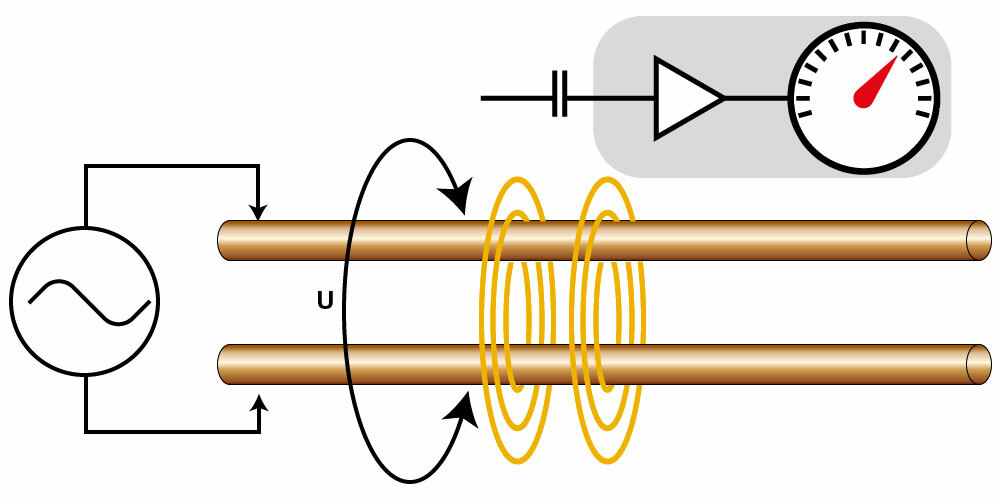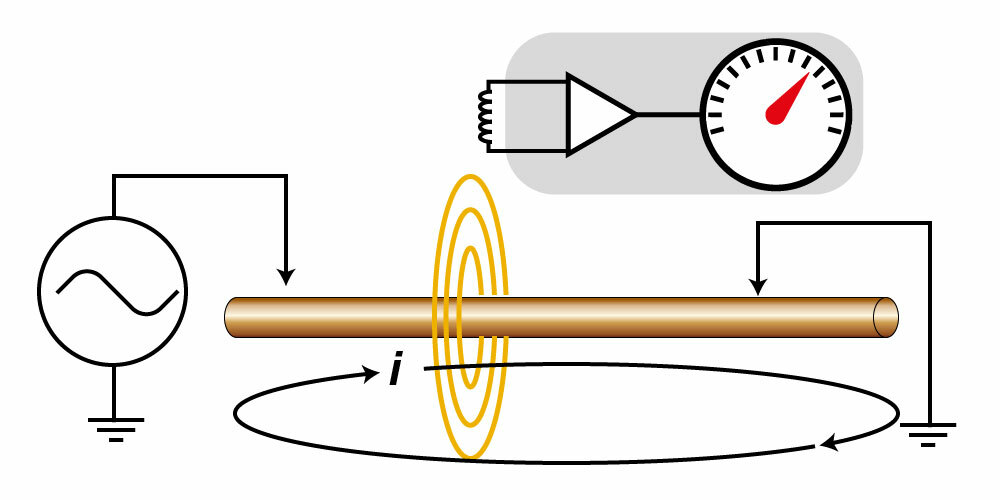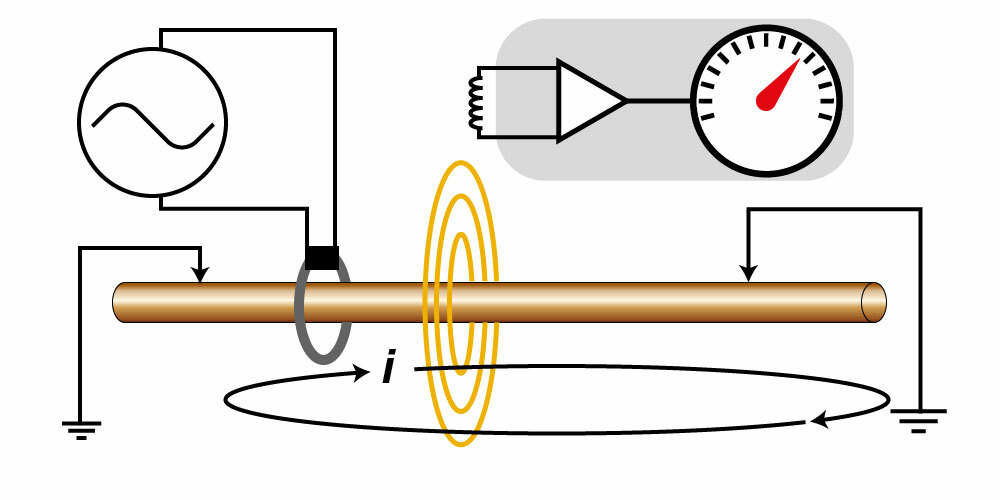This post contains a brief introduction to cable location principles. What does a typical locator consist of? Active/passive location methods. Cable connection methods.

Determining the route of an underground cable or conduit is a common challenge. This challenge can be overcome with the help of special measuring devices. Although they have a similar principles of operation, they can have different names, such as cable locator, cable avoidance tool (CAT), underground wire locator, or cable tracer. Using these devices, it is possible to successfully determine the route of all sorts of cables (even fiber optical cables, given that they are equipped with a metal cordage or jacket). Moreover, these devices can sometimes detect the location of cable faults, such as cable damage or a short circuit.
Locators that were used to search for metal objects underground were first introduced 40 years ago. Initially, they were only used to detect water, gas, or sewer pipes. Today this issue has become significantly more complicated. In addition to metal pipes, an enormous amount of power and telecommunications cables have been laid underground. Over the years, cable locators have become more accurate and now come with new features. However, they still use the same fundamental technology as the very first models. This technology is based on electromagnetic field detection.
How do the aforementioned devices work? The cable locator consists of two parts: a signal generator (transmitter) and a receiver (detector). The former sends a signal to the cable line, while the latter detects it. It can be said that the receiver serves as the "heart" of the cable locator. Firstly, its characteristics and features determine the aggregate capabilities of the generator-receiver pair. Secondly, in some use cases, a generator may not even be required.
The cable locator receiver needs at least one sensor to "pick up" the electromagnetic field. This can come in the form of a whip antenna (capacitive sensor) or a coil (inductive sensor). Both have specific advantages and disadvantages. Therefore, some devices have one or even several (two or even three) replaceable sensors. The signal that they receive is amplified and processed. The resulting processed signal is presented to the operator.

The signal can come from either a voltage or variable frequency current generator (200 Hz - 130 kHz). Some generators have a single fixed frequency. Others have multiple range of operating frequencies (up to 4) that can be chosen based on the use case. Some generators can generate a signal of several frequencies at the same time. And in some cases two frequencies may alternate.
A detection method is considered active if both receiver and generator are utilized. However, a sensor can also detect electromagnetic fields that are generated by other signal sources. This allows the device to detect and trace the routes of loaded power lines (50 Hz and higher harmonics of up to 3 kHz), cathodic protected pipelines (100 Hz), telephone cables via alarm signals (2-18 kHz), wired broadcasting networks (300 Hz - 130 kHz), as well as any conductive objects that have external radio transmitters which can induce a signal in long wave range (140 kHz - 300 kHz), and others. In such cases, the tracing can be performed in passive mode. In other words, it means that the use of a generator is not necessary.

In active mode, the signal can be sent to the cable via several different methods. The generator's signal can be sent directly to the cable (direct connection), via an inductive antenna (remote antenna) or through an inductive coupler (signal clamp).

The direct connection method is self-explanatory. The transmitter must be physically connected to the cable that's being traced. However, if this is impossible, one of the other two methods can be implemented.
An inductive antenna is a coil that receives a signal from the generator. The antenna is placed directly above the cable and induces a signal in it. Of course, such a signal is considerably less powerful as compared to one generated by a direct connection. But the upside is that there is no need to connect to the cable.

Remember that the inductive antenna signal is induced in all utilities at the location where it is placed. This can lead to errors if the signal is not only transmitted through the intended cable but also through other nearby utilities. However, the convenience of this method often outweighs its disadvantages.
Let's assume that you decide to use a direct generator connection. If cable is long and the generator is not powerful enough, the signal will become undetectable at a certain point. To continue tracing in this scenario, the only option is to place an antenna where the signal intensity is strong enough to accurately determine the cable's location. This procedure can be repeated several times, along the entire length of the cable.
An inductive antenna also provides other unique use case options. Remember that the antenna induces a signal in any conductor within its operating range. Let's imagine that there are 2 people in this scenario. The first one has the transmitter with an antenna and the other has the receiver. Then they walk in parallel to one another at a distance of, for example, 65 ft. Thus, they can detect all conductive utilities that cross their path. To gain a more accurate assessment, the same procedure must be repeated several times in different directions.

Unlike an inductive antenna, an inductive coupler (signal clamp) only sends a signal to a single cable. Therefore, connecting to cable conductors is not required. However, using this method is only possible give that there is access to the cable itself. Let's assume that the cable is laid inside cable duct. Then the inductive coupler (signal clamp) can be placed on the necessary cable via the well or hatch. Please note that both ends of the cable must be grounded. This is necessary to ensure that the signal transmission circuit is closed.
 teardownit
teardownit
Discussions
Become a Hackaday.io Member
Create an account to leave a comment. Already have an account? Log In.